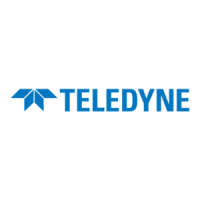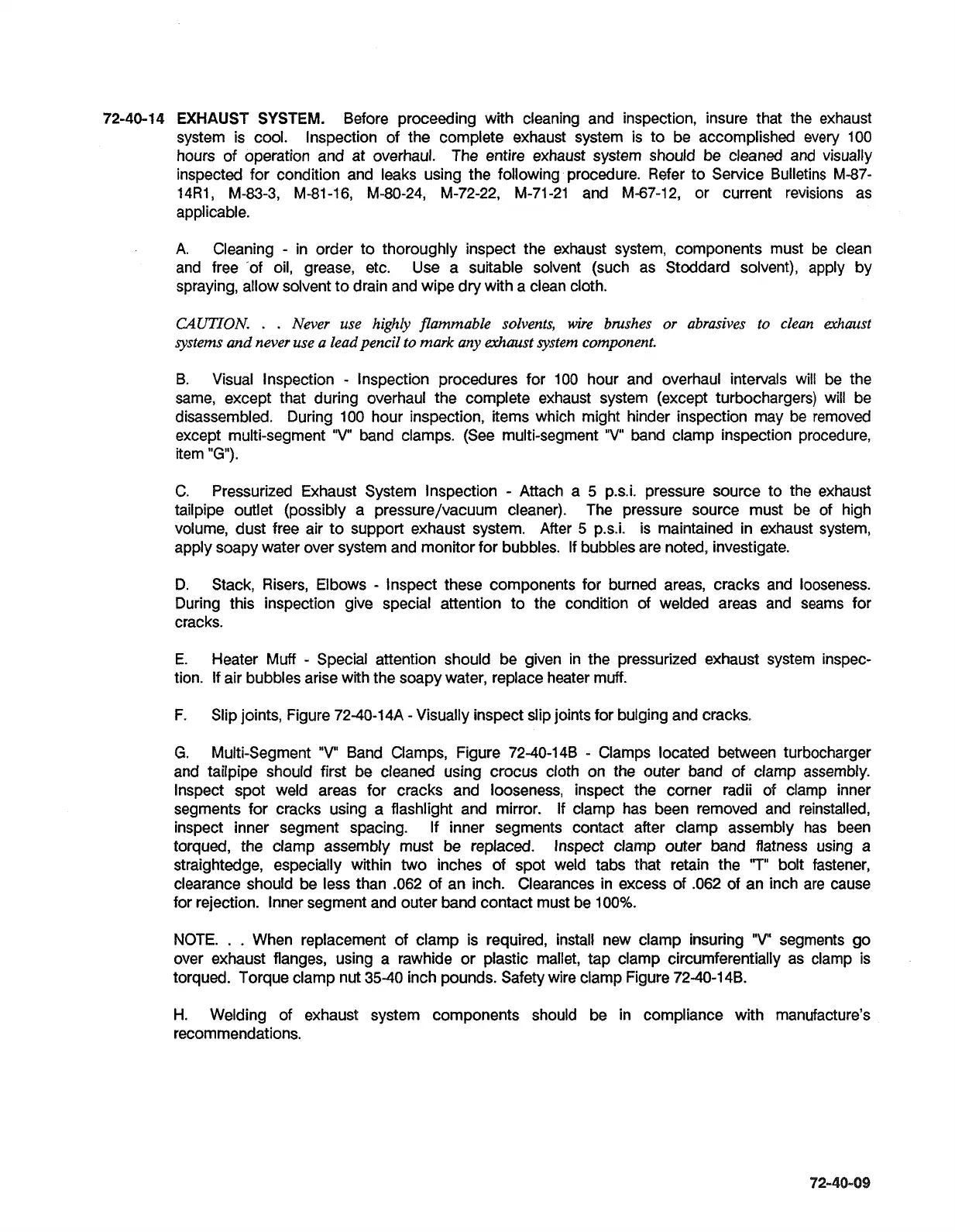72-40-14
EXHAUST SYSTEM.
Before proceeding with cleaning and inspection, insure that the exhaust
system is cool. lnspection of the complete exhaust system is to be accomplished every 100
hours of operation and at overhaul. The entire exhaust system should be cleaned and visually
inspected for condition and leaks using the following procedure. Refer to Service Bulletins
M-87-
14R1,
M-83-3,
M-81-16, M-80-24, M-72-22, M-71-21 and M-67-12, or current revisions as
applicable.
A.
Cleaning
-
in order to thoroughly inspect the exhaust system, components must be clean
and free 'of oil, grease, etc. Use a suitable solvent (such as Stoddard solvent), apply by
spraying, allow solvent to drain and wipe dry with a clean cloth.
C4KC.ON.
. .
Never use
highly
flammable solvents, wire bmshes or abrasives to clean evhaust
systems and never use a lead pencil to
mark
any exhaust system component.
B. Visual lnspection
-
lnspection procedures for 100 hour and overhaul intervals will be the
same, except that during overhaul the complete exhaust system (except turbochargers) will be
disassembled. During 100 hour inspection, items which might hinder inspection may be removed
except multi-segment
'Y"
band clamps. (See multi-segment
"V"
band clamp inspection procedure,
item
"G").
C.
Pressurized Exhaust System lnspection
-
Attach a
5
p.s.i. pressure source to the exhaust
tailpipe outlet (possibly a
pressure/vacuum cleaner).
The pressure source must be of
high
volume, dust free air to support exhaust system. After
5
p.s.i.
is maintained in exhaust system,
apply soapy water over system and monitor for bubbles. If bubbles are noted, investigate.
D.
Stack, Risers, Elbows
-
lnspect these components for burned areas, cracks and looseness.
During this inspection give special attention to the condition of welded areas and seams for
cracks.
E.
Heater Muff
-
Special attention should be given in the pressurized exhaust system inspec-
tion. If air bubbles arise with the soapy water, replace heater muff.
F.
Slip joints, Figure 72-40-14A -Visually inspect
slip joints for bulging and cracks.
G.
Multi-Segment
"V"
Band Clamps, Figure 72-40-148
-
Clamps located between turbocharger
and tailpipe should first be cleaned using crocus ctoth on the outer band of
clamp assernbty.
lnspect spot weld areas for cracks and
looseness, inspect the corner radii of clamp inner
segments for cracks using a flashlight and mirror. If clamp has been removed and reinstalled,
inspect inner segment spacing. If inner segments contact after clamp assembly has been
torqued, the
clamp assembly must be replaced. Inspect clamp outer band flatness using
a
straightedge, especially within two inches of spot weld tabs that retain the
7"
bolt fastener,
clearance should be less than
.062 of an inch. Clearances in excess of .062 of an inch are cause
for rejection. Inner segment and outer band contact must be 100%.
NOTE.
.
.
When replacement of clamp is required, install new clamp insuring
'V
segments go
over exhaust flanges, using a rawhide or plastic mallet, tap clamp circumferentially as clamp is
torqued. Torque clamp nut 35-40 inch pounds. Safety wire clamp Figure
72-40-148.
H. Welding of exhaust system components should be in compliance with manufacture's
recommendations.

